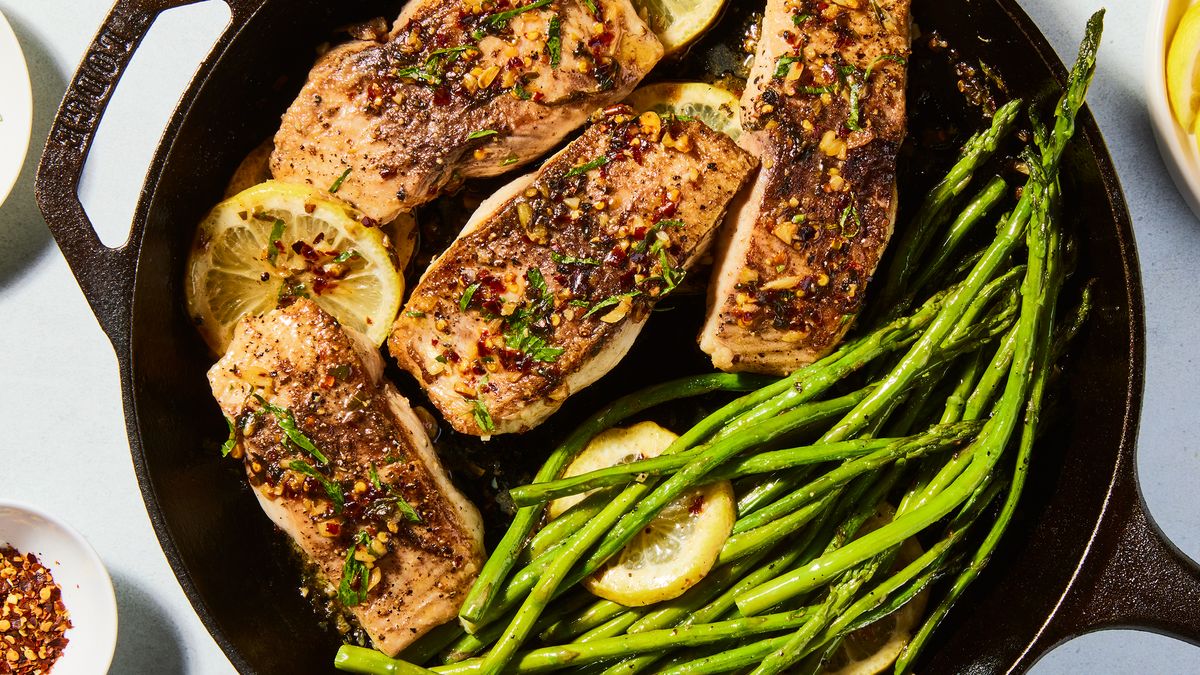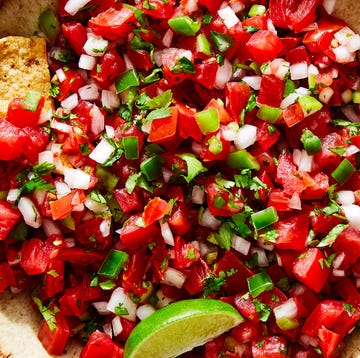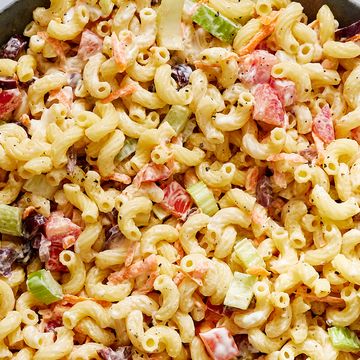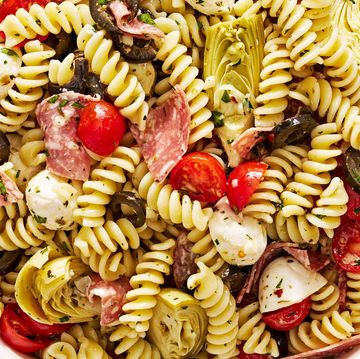Beautifully flaky and tender pan-seared mahi-mahi is the seafood dinner you should be making all year long. The firm, mild fish is not only completely delicious, but super versatile—it takes well to baking, searing, grilling, or frying and welcomes a wide range of sauces and dressings. My favorite way to prep it? Cook it on the stove with some fresh veg like asparagus, then smother it in a lemony butter sauce. Here’s how to make it the best it can be.
What People Are Saying:
"Delicious! One of the best fish recipes ever. Love the simplicity of this recipe also. Will definitely be making this again." - hea5700
"Cooked this meal exactly as written, with the exception of extra butter before the fish was added back in the 2nd time. I was afraid the lemon would be to strong, but it actually was perfectly light and complementary to the mahi." - privatehula
How To Make Garlicky Lemon Mahi-Mahi
INGREDIENTS
- Butter & Olive Oil: Cooking the fish in a combination of butter and oil allows me to play to the strength of each: The oil ensures a good sear, while the butter adds rich flavor. Later, I use still more butter to cook the garlic and establish a silky foundation for the sauce.
- Mahi-Mahi: With its mild flavor and firm, flaky white flesh, mahi-mahi fillets are ideal for pan-searing and make a great canvas for the garlicky, lemony flavors of the butter sauce. If you can’t find mahi-mahi, you can substitute most any other firm white fish, such as cod, striped bass, or halibut.
- Asparagus: Asparagus loves the company of butter and white fish, so it was my natural choice of veg for this recipe. Cooked to crisp-tender, the asparagus adds texture, color, and sweet green flavor. Since this recipe is designed for speed, I prefer to use thinner spears for this recipe.
- Garlic: Don’t be scared off by the generous amount of garlic here. Chopped fine and cooked until it loses its raw bite and turns sweet and aromatic, the garlic produces a sauce with incredible depth. Think garlic butter—but even better!
- Red Pepper Flakes: I use a little bit of red pepper to give the sauce a welcome, but not overwhelming, kick. Feel free to skip it if you’re heat sensitive.
- Lemons: I wanted all the lemon flavor in my sauce, so I used a combination of juice, zest, and whole slices. The juice merges deliciously with the butter and all those delicious browned bits from the bottom of the pan, the zest adds an aromatic top note, and the slices keep all the flavors bright and fresh.
STEP-BY-STEP INSTRUCTIONS
Start by choosing your tools. First: a fish spatula or some other type of large flexible spatula. Second: a large cast-iron or nonstick skillet (no stainless steel or aluminum, please; the fish will stick). Now, heat 1 Tbsp. butter and 1 Tbsp. oil in the skillet. When the oil/butter mixture is good and hot, arrange the mahi-mahi, skin side down if it has skin, in the skillet; season with salt and black pepper. Cook, undisturbed, until golden underneath, 4 to 5 minutes. Turn the fillets over and cook until golden on the second side and just cooked through (i.e., just opaque throughout and the flesh should flake with little prompting), about another 4 minutes. Using your spatula, transfer the fish to a plate; reserve the skillet.
Add the remaining 1 Tbsp. oil to the skillet and increase the heat to medium-high. Spread out the asparagus in the skillet and season with salt and black pepper; cook, tossing occasionally, until crisp-tender, 2 to 4 minutes. Transfer to the plate with the fish.
Now for the sauce: Reduce the heat to medium and melt the remaining 2 Tbsp. butter in the skillet. Add the garlic and red pepper flakes and cook, stirring often, until fragrant, about 1 minute. Add the lemon juice, scraping up any browned bits from the bottom of the skillet. Add the zest, then arrange the lemon slices in the skillet in a single layer. Remove from the heat and return the mahi-mahi and asparagus to the skillet; spoon sauce over both.
Scatter some chopped parsley over and season with more black pepper.
Full list of ingredients and directions can be found in the recipe below.
Recipe Tips
- How to prevent fish from sticking to the pan: If the mahi-mahi starts to stick to the pan, don’t fret. Fish can occasionally stick when you’re cooking it, but there are a few surefire tricks to make sure that doesn’t happen. First, pat your fish as dry as possible on both sides before adding it to the pan. Second, make sure the pan is really hot before the fish goes in. You don’t want the pan to be smoking, but you should hear a distinct sizzle when the fish hits the pan. Finally, let the fish cook, undisturbed, for at least 3 minutes before you try to turn it. The fish will release from the pan when it’s ready; if it’s sticking, just give it another minute and then try again.


















